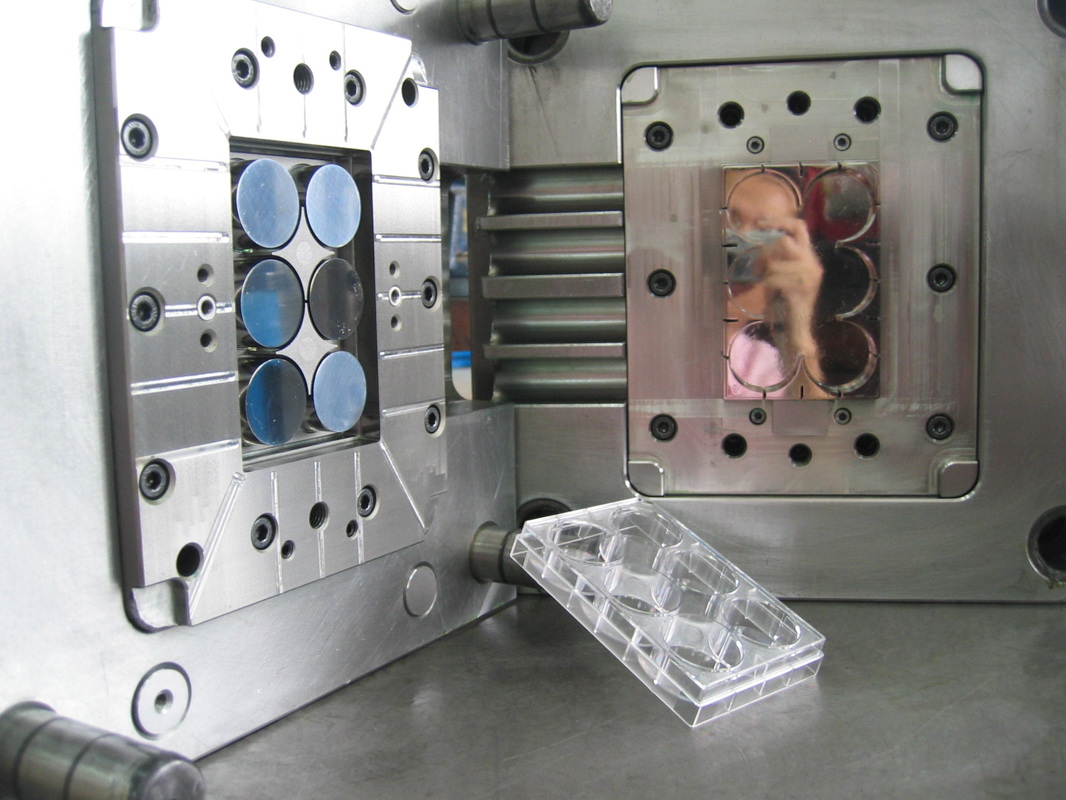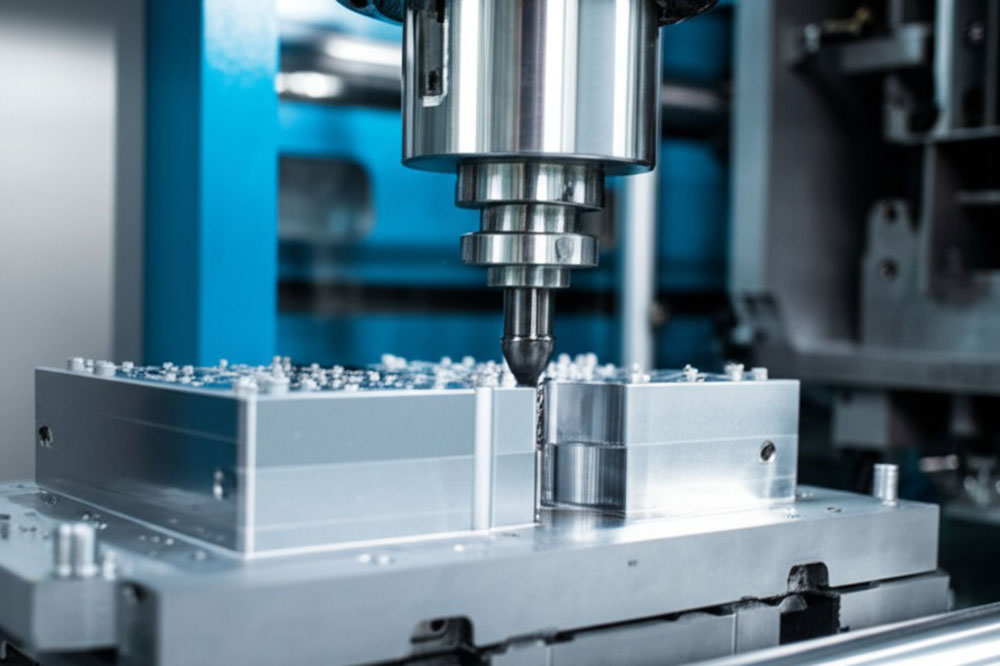How to Improve Injection Mold Tool Life?
Introduction
In the manufacturing industry, particularly in plastic injection molding, the injection mold tool life is a critical factor that determines production efficiency, cost-effectiveness, and product quality. Understanding the factors affecting mold life and adopting proper design, material selection, and maintenance strategies can significantly extend the life of injection molds, reducing downtime and increasing profitability.
This article provides an in-depth analysis of injection mold tool life, covering its definition, influencing factors, measurement criteria, common defects, and best practices for longevity.
Why is Mold Longevity Important?
Injection molds are one of the most expensive investments in plastic manufacturing. A well-maintained mold can produce millions of high-quality parts, while a poorly designed or misused mold can fail prematurely, leading to high repair costs, production delays, and compromised product quality.
Extending mold life can result in:
✅ Lower production costs by minimizing the need for frequent replacements.
✅ Higher efficiency due to reduced downtime for maintenance and repairs.
✅ Consistent product quality as molds maintain dimensional accuracy over time.
✅ Better ROI (Return on Investment) as the mold serves for more cycles.
With the increasing demand for high-precision plastic components in industries like automotive, medical, electronics, and consumer goods, improving injection mold tool life is a top priority for manufacturers.
What is an Injection Mold?

An injection mold is a precision-engineered tool used in the plastic injection molding process to form plastic parts. These molds are typically made of high-strength steel or aluminum and consist of multiple components, including:
-
Cavity and Core: The primary shaping elements that define the plastic part’s structure.
-
Cooling System: Channels that circulate water or oil to regulate mold temperature.
-
Ejection System: Ejector pins or plates that push the formed part out of the mold.
-
Gating System: The runners and gates that control plastic flow into the cavity.
Technical Aspects of Mold Construction
Molds are classified based on their complexity and durability. High-end molds for mass production require hardened tool steel with advanced coatings, while prototype molds may use aluminum for cost efficiency.
Key mold materials include:
-
P20 Steel (HRC 28-32): Suitable for mid-volume production (~500,000 cycles).
-
H13 Steel (HRC 42-52): Ideal for high-temperature applications (~1,000,000 cycles).
-
S136 Stainless Steel (HRC 48-52): Corrosion-resistant, excellent for medical and food-grade applications.
By selecting the right material and designing molds with optimal cooling and ejection systems, manufacturers can maximize efficiency and extend the injection mold tool life.
Mold Categories Based on Applications
-
Single-Cavity Molds: Used for low-volume or highly precise parts.
-
Multi-Cavity Molds: Enhances productivity by producing multiple parts per cycle.
-
Hot Runner Molds: Reduces material waste and improves cycle time.
-
Cold Runner Molds: More cost-effective but requires manual runner removal.
What is the Average Injection Mold Tool Life?
The life expectancy of an injection mold varies depending on material, design, processing conditions, and maintenance. Generally, mold life is measured in cycles, with classifications as follows:
| Mold Class | Material Type | Typical Cycle Life | Application |
|---|---|---|---|
| 101 Class | Hardened Steel | 1,000,000+ | High-volume production (automotive, aerospace) |
| 102 Class | Hardened Steel | 500,000+ | Medium to high production (consumer electronics) |
| 103 Class | Pre-Hardened Steel | 100,000+ | Low to mid-volume production |
| 104 Class | Aluminum or Soft Steel | 10,000+ | Prototype and short-run production |
| 105 Class | Soft Steel or Epoxy | <500 | Temporary or experimental use |
Factors Affecting Expected Life
-
Material Hardness: Higher hardness (e.g., HRC 50+) resists wear and extends life.
-
Processing Temperature: Elevated temperatures accelerate mold degradation.
-
Injection Pressure: Excessive pressure can cause stress fractures.
-
Cooling Efficiency: Poor cooling leads to thermal fatigue and mold failure.
Ways to Maximize Expected Mold Life
-
Select the right mold material based on production volume.
-
Optimize part design to reduce stress on the mold.
-
Implement preventive maintenance schedules.
-
Use protective coatings to reduce wear.
How is Injection Mold Tool Life Measured and Classified?
Injection mold life is assessed using standardized industry benchmarks, with the Society of the Plastics Industry (SPI) mold classification system being the most widely used.
Key Measurement Parameters
-
Cycle Count: The total number of completed injection cycles before failure.
-
Surface Wear Analysis: Optical and electron microscopy detect microcracks and wear patterns.
-
Hardness Testing: Rockwell and Vickers hardness tests determine material degradation.
-
Thermal Cycling Tests: Examines mold resistance to repeated heating and cooling.
-
Dimensional Accuracy Checks: Ensures the mold maintains tolerances over time.
By regularly monitoring these parameters, manufacturers can anticipate mold replacement needs and enhance injection mold tool life.
Advanced Testing Techniques
-
Finite Element Analysis (FEA): Predicts stress concentration points in the mold.
-
3D Scanning and Reverse Engineering: Detects deviations from original mold dimensions.
-
Ultrasonic Testing: Identifies internal defects and cracks within the mold steel.
What Factors Affect Injection Mold Tool Life?
Several key factors contribute to the lifespan of an injection mold:
1. Material Quality
-
Steel Composition: High-alloy tool steels resist wear and corrosion.
-
Surface Treatments: Nitriding, chrome plating, or PVD coatings enhance durability.
2. Mold Design & Engineering
-
Uniform Wall Thickness: Reduces thermal stress and cycle time.
-
Optimized Gating System: Prevents flow turbulence that causes erosion.
3. Processing Conditions
-
Injection Speed & Pressure: Excessive force accelerates wear.
-
Melt Temperature Control: Overheating degrades the mold structure.
4. Maintenance & Cleaning
-
Lubrication: Ensures smooth operation of ejector pins and slides.
-
Preventive Inspections: Detects early signs of failure (e.g., cracks, oxidation).
By addressing these factors, manufacturers can significantly improve injection mold tool life.
What are the Common Causes of Injection Mold Tool Wear and Damage?

Even the most well-designed injection molds will experience wear and eventual failure over time. However, understanding the primary causes of mold damage can help manufacturers take proactive steps to prevent premature failure. Below are the most common reasons for mold degradation:
1. Abrasive Wear
Abrasive wear occurs when filled resins (such as glass fiber-reinforced plastics) or contaminants in the raw material cause surface erosion over time. High-friction contact between the molten polymer and the mold cavity walls leads to material removal, reducing dimensional accuracy and surface finish quality.
Prevention Methods:
✅ Use hardened tool steel (e.g., H13 or S136) for high-wear applications.
✅ Apply surface coatings like titanium nitride (TiN) or chromium plating to increase resistance.
✅ Implement proper mold lubrication and polishing schedules.
2. Thermal Fatigue and Cracking
Repeated heating and cooling cycles cause mold steel to expand and contract, leading to stress fractures and cracks over time. This is especially prevalent in molds used for high-temperature engineering plastics.
Prevention Methods:
✅ Optimize cooling channel design to ensure uniform heat dissipation.
✅ Use preheated molds to reduce sudden temperature changes.
✅ Select high-temperature-resistant steels for high-heat applications.
3. Corrosion and Chemical Attack
Certain plastics, especially those containing flame retardants or chlorine-based compounds, release corrosive gases during molding. These chemicals react with the mold surface, leading to pitting, rust, and material degradation.
Prevention Methods:
✅ Choose stainless steel molds (e.g., S136, 420 SS) for corrosive environments.
✅ Regularly apply anti-corrosion coatings to mold surfaces.
✅ Ensure proper ventilation to remove corrosive gases.
4. Mechanical Fatigue & Stress Fractures
Repeated injection pressure cycles place immense stress on mold components, causing fractures or deformation over time. Undersized ejector pins, improperly designed gates, and weak parting lines are particularly vulnerable.
Prevention Methods:
✅ Use stress-relieved tool steel to minimize residual stress.
✅ Optimize parting line and gate designs to distribute forces evenly.
✅ Conduct regular non-destructive testing (NDT) to detect early fractures.
By identifying and mitigating these failure mechanisms, manufacturers can significantly extend the injection mold tool life and reduce costly downtime.
How to Increase Injection Mold Tool Life?
To maximize the longevity of an injection mold, manufacturers must implement best practices across design, material selection, processing, and maintenance.
1. Select the Right Mold Material
Mold steel selection is critical in determining durability and resistance to wear. Below are the recommended materials based on application:
| Steel Grade | Hardness (HRC) | Best For | Expected Lifespan |
|---|---|---|---|
| P20 Steel | 28-32 | General-purpose molds | ~500,000 cycles |
| H13 Steel | 42-52 | High-wear, high-temp applications | ~1,000,000 cycles |
| S136 Steel | 48-52 | Corrosive materials (medical, food-grade) | ~1,000,000 cycles |
| 420 Stainless | 50-55 | High-polish molds (optical, automotive) | ~1,000,000 cycles |
Using pre-hardened steel for low-volume applications and through-hardened steel for high-production runs ensures cost-effectiveness and longevity.
2. Optimize Mold Cooling and Thermal Management
Efficient cooling not only improves cycle time but also reduces thermal stress, preventing early mold failure.
✅ Use beryllium copper inserts in high-heat areas to improve thermal conductivity.
✅ Design conformal cooling channels using 3D printing technology for even heat dissipation.
✅ Employ thermal imaging cameras to detect hot spots and optimize cooling layouts.
3. Apply Protective Surface Coatings
Advanced coatings can significantly enhance wear and corrosion resistance.
✅ TiN (Titanium Nitride): Improves wear resistance for high-abrasion molds.
✅ PVD (Physical Vapor Deposition): Reduces friction and enhances durability.
✅ Nickel Plating: Provides excellent corrosion protection for PVC and flame-retardant plastics.
4. Implement Preventive Maintenance Strategies
Mold maintenance should be systematic rather than reactive.
✅ Daily: Clean cavities and apply rust preventatives.
✅ Weekly: Inspect ejector pins, slides, and cooling channels.
✅ Monthly: Conduct ultrasonic cleaning and dimensional inspections.
✅ Annually: Perform complete tear-downs and refurbishments.
By following these best practices, manufacturers can effectively increase injection mold tool life and maximize production efficiency.

Maintenance and Cleaning Tips for Long-Lasting Injection Molds
Proper mold maintenance is essential to ensuring consistent performance and extending tool life. Below are some key techniques:
1. Mold Cleaning Procedures
Mold cavities accumulate residue over time from plastic additives, leading to defects like burn marks or flow lines.
✅ Use dry ice blasting for non-abrasive, deep cleaning.
✅ Apply ultrasonic cleaning to remove stubborn deposits.
✅ Use pH-neutral mold cleaners to avoid chemical damage.
2. Lubrication and Protection
✅ Use high-temperature mold greases to reduce ejector pin wear.
✅ Apply anti-rust sprays to prevent oxidation during storage.
✅ Store molds in climate-controlled environments to avoid condensation.
3. Predictive Maintenance Technologies
✅ Thermal imaging detects uneven heat distribution in molds.
✅ Vibration analysis identifies wear on ejector pins and moving components.
✅ IoT-based monitoring systems track mold cycle counts and wear patterns.
By integrating predictive maintenance, manufacturers can anticipate mold failures and perform proactive repairs, significantly enhancing injection mold tool life.
Why Choose Huazhi Technology for Your Injection Mold Needs?
-
Premium Materials: High-quality steel for long-lasting durability.
-
Advanced Design: Precision-engineered for optimal performance.
-
Comprehensive Support: From design to production, we provide full assistance.
-
Competitive Pricing: Cost-effective mold solutions for various industries.
Conclusion
Maximizing injection mold tool life requires a combination of selecting high-quality materials, optimizing mold design, maintaining precise processing conditions, and conducting regular maintenance. By implementing these strategies, manufacturers can achieve extended mold lifespans, reduced downtime, and higher profitability.
📞 Contact Us Today to discuss your injection molding needs!
FAQs
1. How do I know when my injection mold needs replacement?
If you notice excessive flash, warping, or part inconsistencies, it may be time for mold repair or replacement.
2. How often should I perform mold maintenance?
Routine cleaning and lubrication should be done after every production run, with thorough inspections every 50,000 cycles.
3. What’s the best material for long-lasting molds?
Hardened steel (H13, S136, 420 SS) provides the best durability and resistance to wear.
4. Can mold coatings improve tool life?
Yes, nitriding and PVD coatings enhance mold surface hardness, reducing wear and corrosion.
5. How can I reduce maintenance costs for my molds?
Using optimized injection parameters, selecting the right molding material, and performing preventive maintenance can significantly reduce long-term costs.
